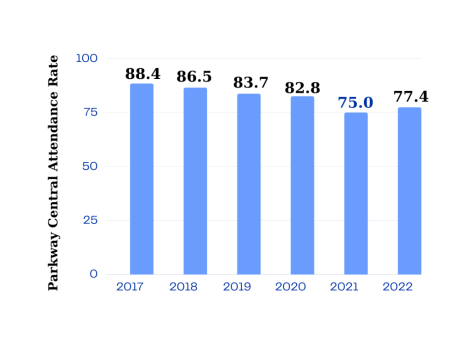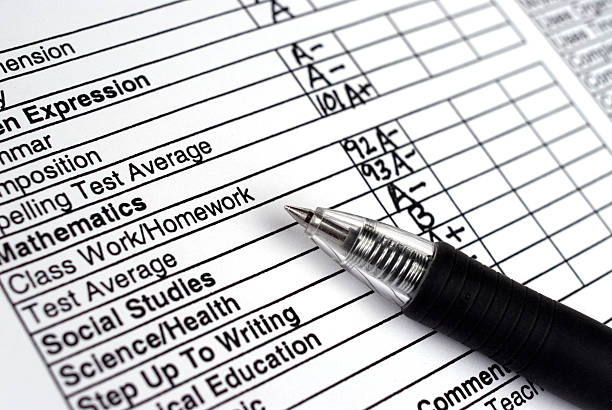Attendance on Its Way Down
How will the dropping attendance rates affect high schoolers’ futures?
Photo courtesy of Pixabay.
May 12, 2023
If you’ve noticed that your classes have been a little quieter this year, you’re not alone. Some people may think it’s senioritis already manifesting in September, or maybe flu season has come a little earlier this year. But the real reason to why you’ve probably seen the same empty desks multiple times a week is a result of the epidemic of chronic absenteeism.
According to data from the Missouri Department of Elementary and Secondary Education, provided by Parkway’s Data Management Director,
Nathan Tyson, attendance rates have been steadily decreasing over the last six years, with a stark dip immediately following COVID.

These rates show the proportion of students who attend school at least 90% of the time, which is the Missouri required attendance percentage. This means that during the 2021-22 school year, only about three-quarters of students at Parkway Central were present 90% of the school days. But what has caused this decrease in overall attendance by over 10%?
At Central, the top excuse codes so far this year (from higher to lower) have been Absent Unexcused, Illness, Absent Excused, Doctor Appointment, Suspension, Athletic Event, Religious Holiday, School Visit, and Family Vacation. This does indicate that there are several “excusable” reasons for missing school, but how many of these “Doctor Appointments” are really just parents playing along with their child wanting to miss their last class of the day? This is where attendance rates become difficult to track. Because our check-in office doesn’t require evidence of where you were, like a slip from the doctor’s office, it’s been extremely easy to miss a class for the orthodontist three times a week.
Before the pandemic, about 8 million U.S. students were considered “chronically absent,” according to the research group Attendance Works, which is when a student misses 10% or more of the school year. By spring 2022, that number had doubled to around 16 million. Hedy Chang, the executive director of Attendance Works, told NPR that she hasn’t seen the kind of recovery since then that she’d hoped for.
“I think people have been a little bit under the false impression that when COVID became more endemic, that that would then result in a significant improvement in attendance,” Chang said. “And I’m not seeing that.”
To no one’s surprise, students who are chronically absent are at a higher risk of falling behind, scoring lower on standardized tests, and even dropping out of high school. However, some students are able to somehow maintain satisfactory or even excellent grades in most or all of their classes, even if it seems like they miss school more often than they show up.
According to a Pearson correlation run by Tyson, the correlation between GPA and attendance is 0.454 and is statistically significant. This correlation means that there is a moderate relationship between GPA and attendance rate, and about 20% of the variance in a Central High student’s GPA can be explained by the variance in atten-
dance rate. Other factors, such as the number of hours spent on homework, minutes spent reading outside of school, and hours spent engaged in some type of extracurricular or enrichment activities, can account for the other 80% of the variance.
“I think attending school regularly is important,” Tyson said. “Good attendance will help contribute to better grades in high school and better outcomes in life generally.”
4 Key Findings (courtesy of Attendance Works)
1. Students’ attendance and GPA in the middle grades provide the best indication of how they will perform in their high school classes, compared with other potential indicators such as test scores. These are the best indicators to use for setting goals with students and identifying which students need support and intervention at the start of the school year.
2. Many students with the highest levels of achievement in the middle grades fall off-track for college in 9th grade. Students who enter 9th grade with high achievement in the middle grades could benefit from monitoring and intervention if they fail to earn high grades in high school, to make sure they reach their college potential.
3. Students who were chronically absent or received Fs in middle school are already very likely to be off-track before they even begin high school. Supporting these students early in 9th grade is a critical step to helping them graduate.
4. Most students who are off-track in 9th grade courses did not show signs of academic trouble in middle school. 9th grade early warning monitoring systems, based on course grades and attendance in high school, are critical to keeping all students on-track to graduate — for many students, academic problems start when they enter high school.



